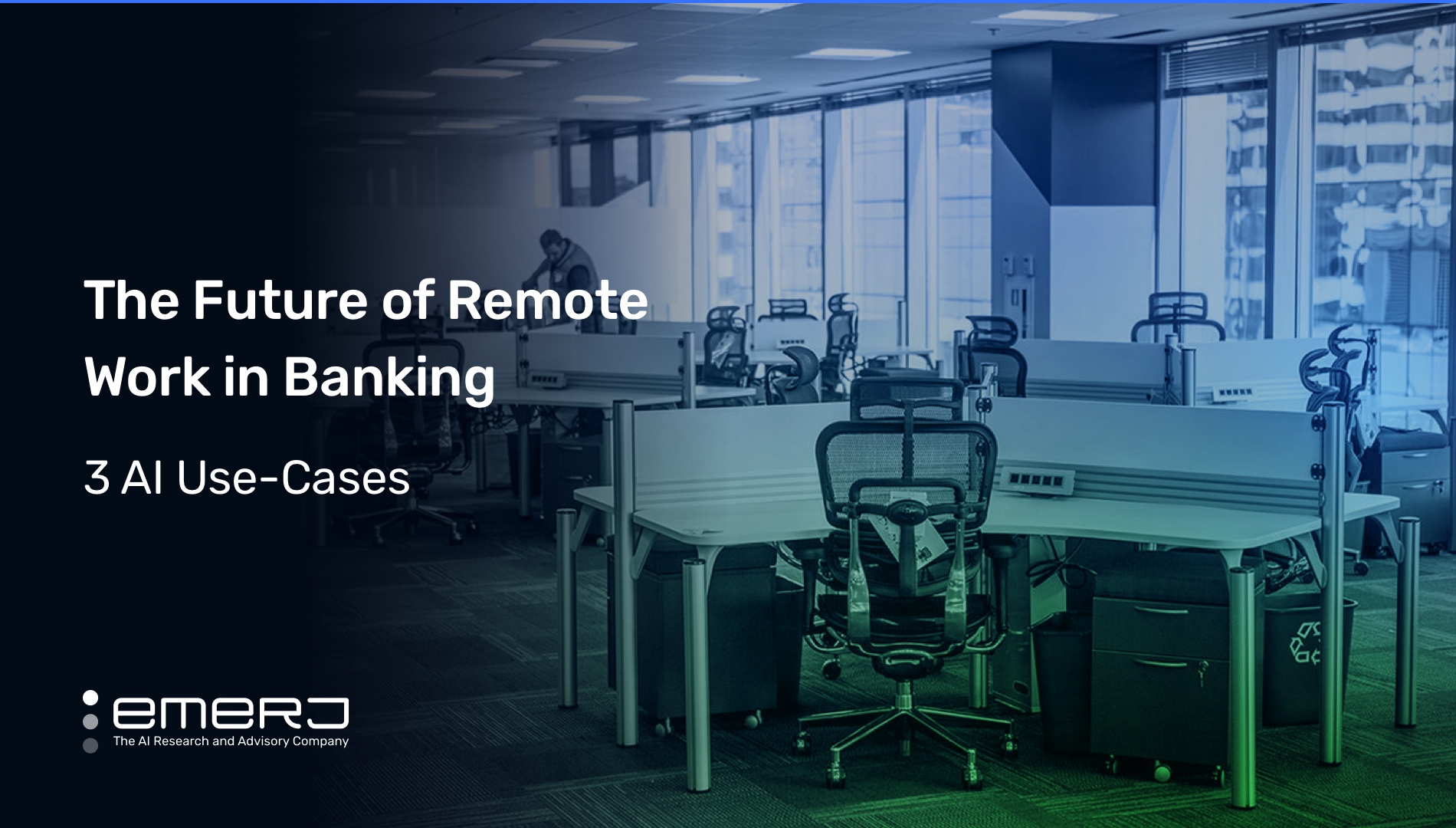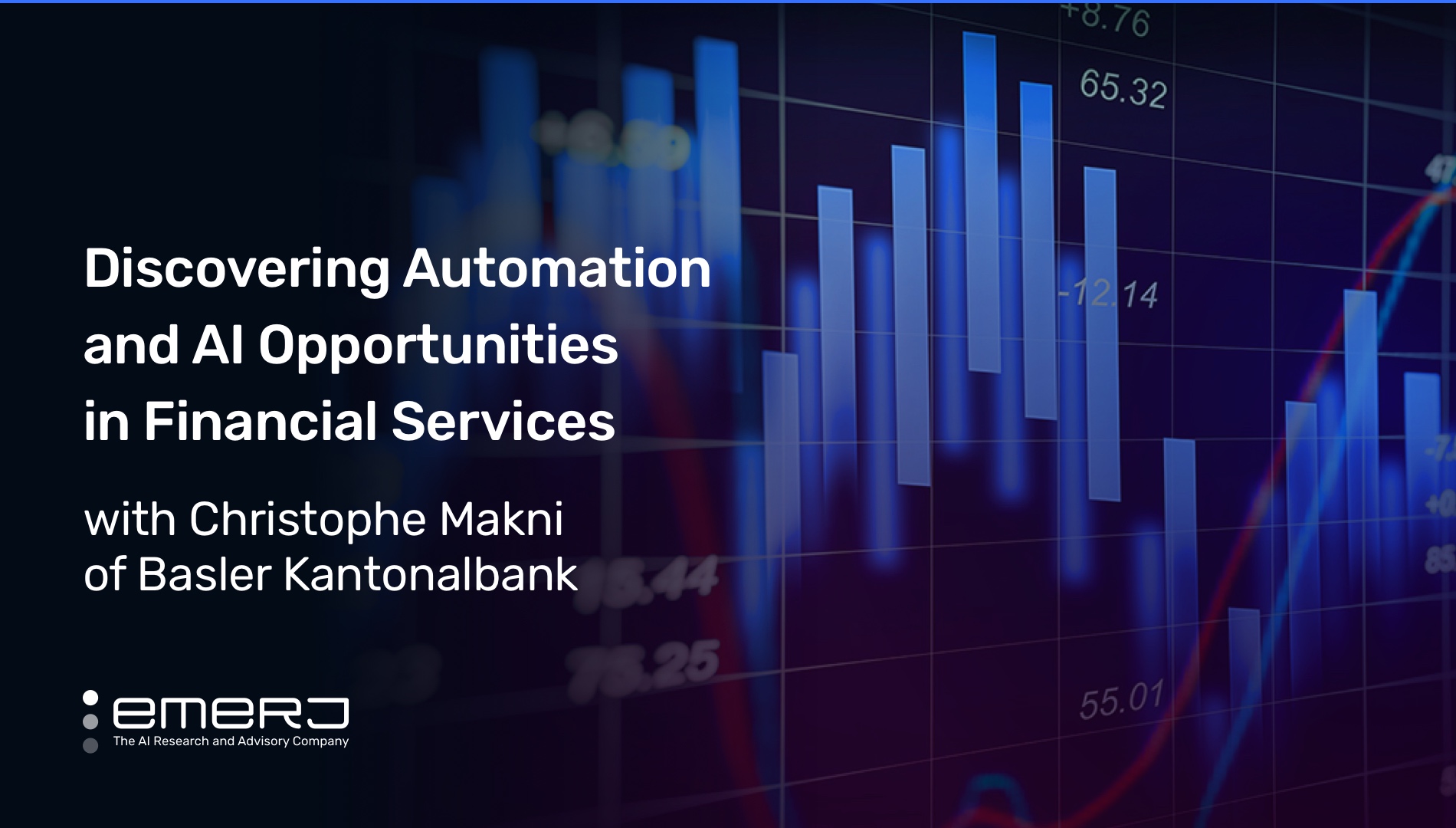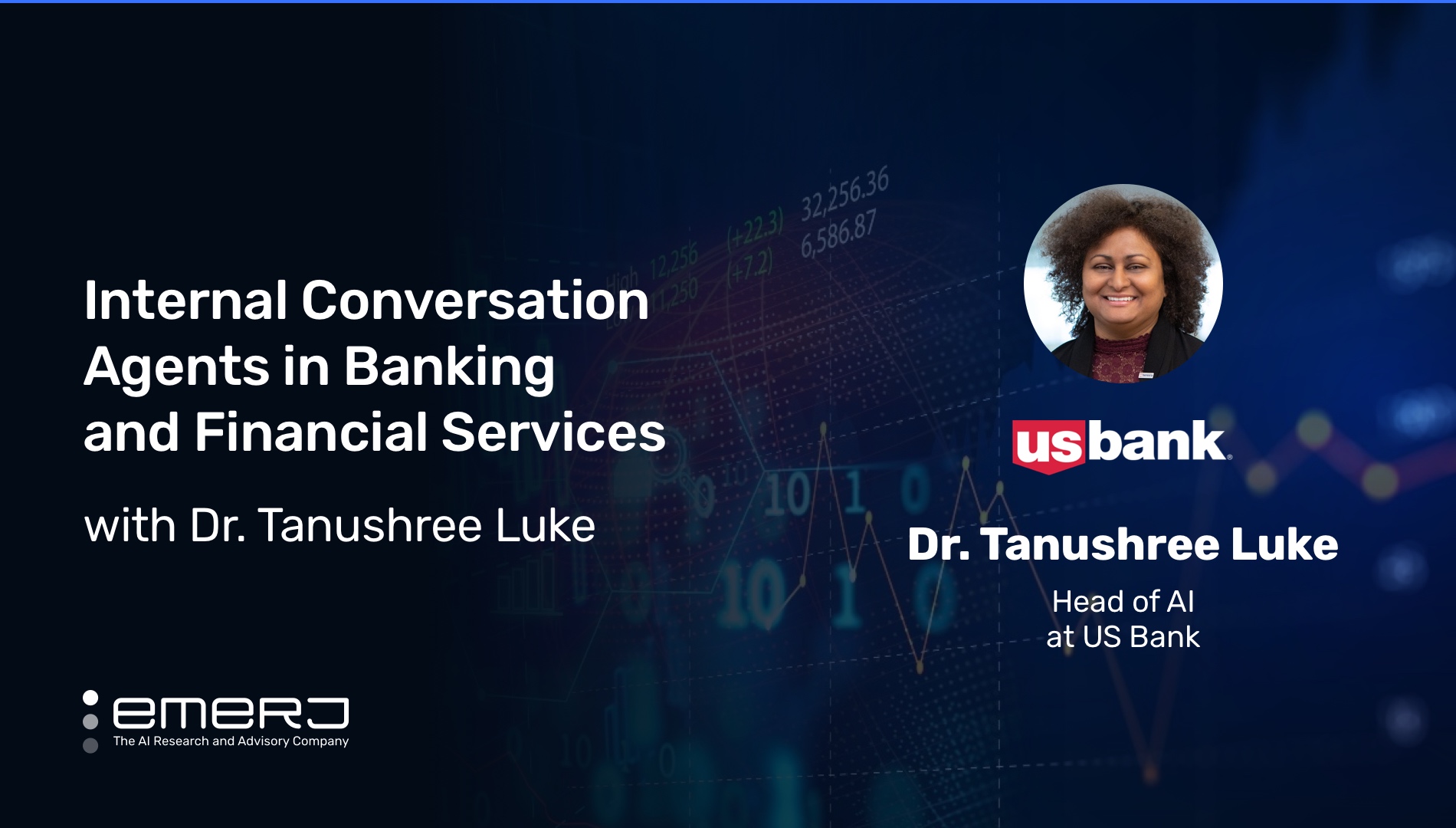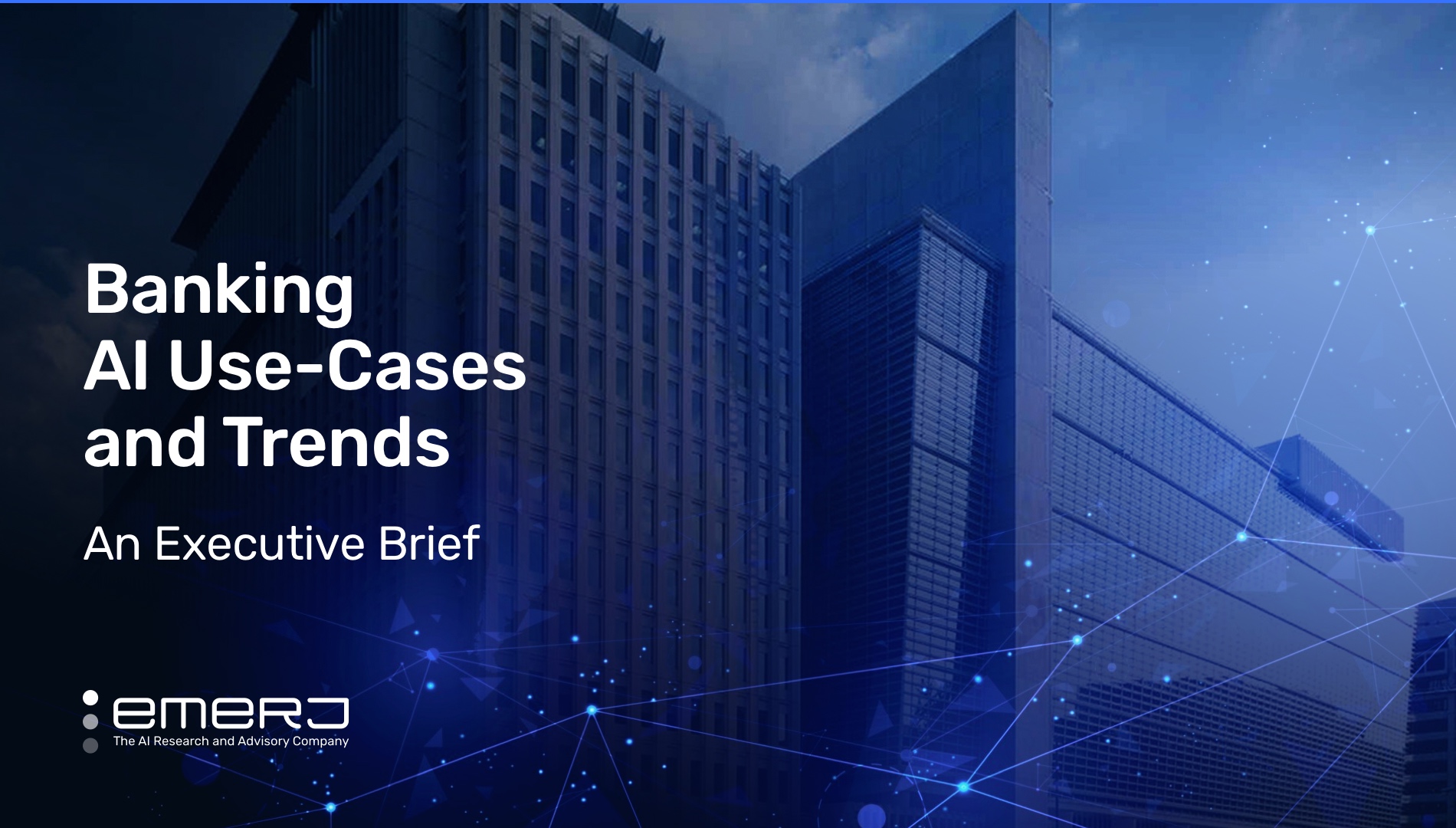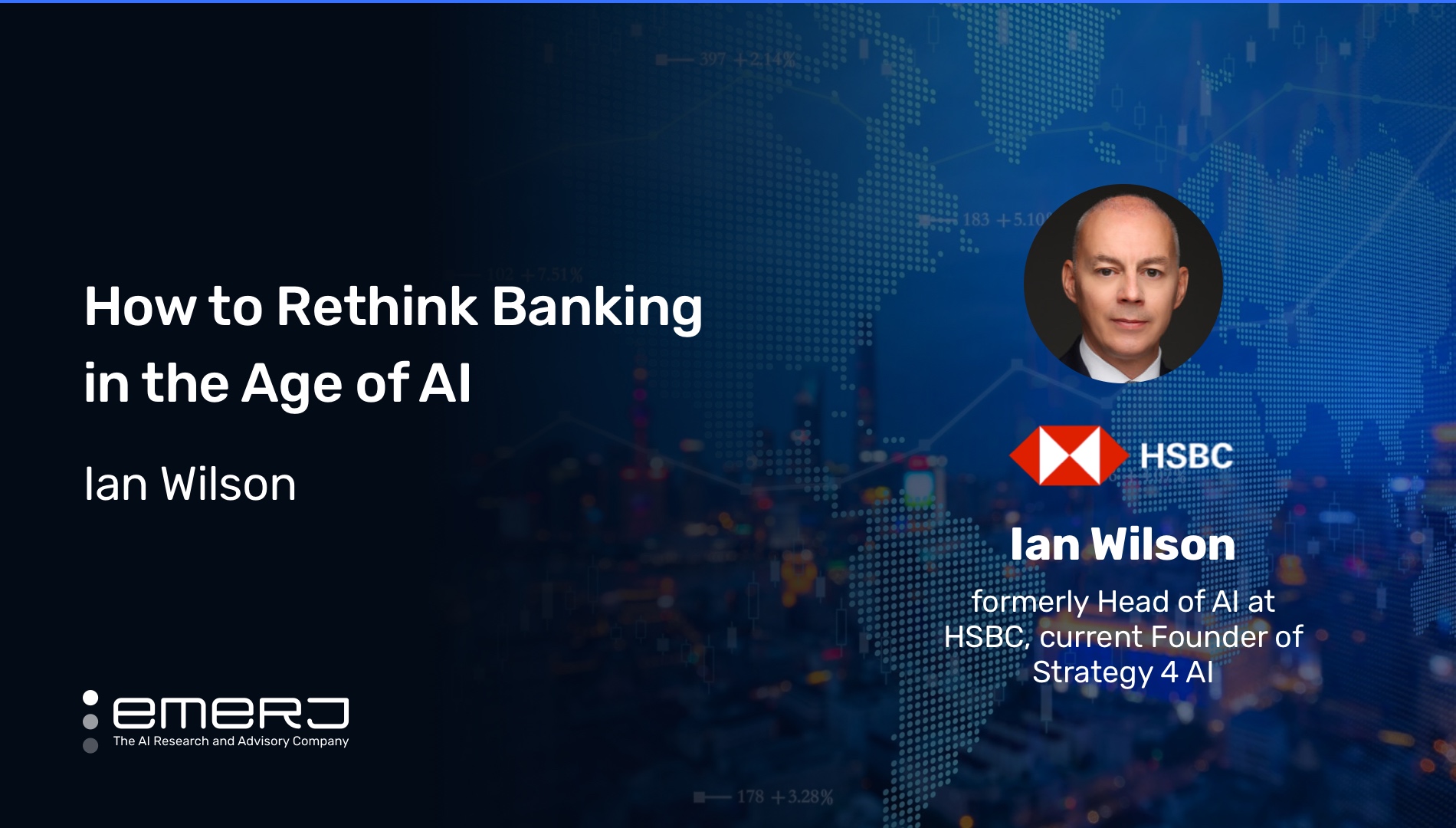The Future of Remote Work in Banking – 3 AI Use Cases
Banking is an industry well-known for its robust office culture. Even though banks performed incredibly well during the pandemic – record profits despite global uncertainty – some prominent banking leaders wanted their employees back in the office. Unfortunately for these leaders, they are fighting a losing battle.
According to KPMG, the work-from-home revolution ushered in by the COVID pandemic will result in a permanent hybrid working model for banks. KPMG isn’t alone. Deloitte, Gartner, McKinsey, and many other respected information sources are saying the same thing: remote work is the future.
Bank branches will be affected too. In an insightful report on remote work by McKinsey, the number of full-time branch employees is estimated to shrink 33% by 2030.
The same report states that it isn’t just back-end, but front-end, customer-facing roles as well. Case in point: a LinkedIn search for remote banker positions yielded over 1,000 results.
The COVID pandemic has hastened the remote work trend. Despite some initial hiccups, most employees began to settle into working from home. Eventually, many did not want to come back into the office. Fast-forward to mid-2022, and we are reading about CEOs of prestigious banks calling a return to office work “unrealistic.”
The trend is even affecting talent retention and acquisition. Younger finance workers are either quitting or not bothering to interview sans a remote work option.
In this article summary, we will provide banking leaders with an overhead view of current and near-future trends in remote work, while demonstrating the AI impact on these trends through three use cases:
- Collaboration and coaching challenges remain in remote work for the banking sector.
- Security and fraud incidents are increasing.
- Banks are upskilling, reskilling, and redeploying talent to compensate.
We aim to answer two main questions in this executive guide:
- What trends are driving remote work in banking and financial services?
- What technologies and use-cases are enabling remote work now and into the future?
We will begin by examining each trend and corresponding use case sequentially, beginning with AI-enabled personalization.
Remote Working Trends in Banking
Trend #1: Collaboration, Coaching Challenges Remain
While the majority of remote bank employees are quite satisfied with remote work, challenges do remain. Challenges that appear to apply across the banking space are those related to collaboration and coaching.
In a May 2021 report by McKinsey, banking leaders stated that “soft issues – employee collaboration, coaching, talent development, a strong culture – are equally challenging” as technological challenges.
The reasons for this problem seem to revolve around two issues, one of which is a challenge for every remote worker and affirmed by banking leaders in the above report: technical difficulties, particularly those revolving around network reliability and speed. The other reason seems to revolve around generational attitudes towards the use of technology for work-related collaboration.
“For previously co-located employees, the transition to online management practices – many of them adapted from lean and agile, such as daily check-ins, huddles, visual management, and standard work validation – may be difficult.”
– From Virtually Possible: Getting Remote Work Right for G&A Functions (McKinsey, 2021)
There appear to be two big reasons for these collaborative struggles. First, banking has historically been a traditional and conservative industry slow to embrace change, as is most clearly seen in the C-suite.
Most traditional banking leaders came from business schools and role-modeling internships that emphasized close-proximity group work and frequent customer contact. It is no surprise, then, that leaders such as Chase’s Jamie Dimon and Goldman Sachs’s David Solomon are no fans of remote work in general and digital collaboration in particular.
Secondly, an age gap remains in the industry, including between younger and older managers and executives.
The comfort with technology use that correlates with age inevitably carried over into the banking sphere, encompassing senior and junior managers and executives. The former have held meetings and coaching sessions up close and personal for years, while the latter has embraced the latest collaboration tools.
As we noted before, banking leaders – including those mentioned above – are fighting a losing battle. Powerful though a CEO may be, the collective attitudes of a remote workforce that have embraced work-from-home and a talent pool that refuses to go back to the office trumps the top brass every time.
On the other hand, banking leaders have embraced technology and AI wholeheartedly in accomplishing business objectives. Perhaps a better question would then be: can we use these same tools to collaborate more effectively and achieve business objectives?
Use Case: Intent-Based Networking
A vital element of any remote team is network reliability, yet it remains a sticking point to the productivity of enterprises and that of their remote workforce. Employee frustration and low morale are often the results, which can further lessen productivity.
In a 2022 report about the state of remote work in the United States, 27% of respondents stated that access to reliable, high-speed internet” impeded effective remote work. Only demands at home for childcare ranked higher (29%).
It must be made clear that AI can not increase network speed directly, but it can potentially optimize network conditions using intent-based networking (IBN). There are other possible outcomes of IBN which we will explore later.
In simple terms, IBN uses AI-enabled software to automate and potentially optimize network operations and extend uptime. IBN accomplishes this through the use of natural language processing to understand user intent, usually a business objective or outcome. Machine learning algorithms then use the intent input to configure network settings based on enterprise network policies.
Data is collected for the end user to ensure that the solution is delivering on user intent. Network operators can review and accept AI-generation solutions before implementation. In this way, the end user is not cut out and, the company explains, the solution’s machine reasoning capabilities are expanded.
Cisco claims in its product literature that its IBN solution uses machine reasoning to preemptively identify and solve network problems.
Below is an approximately two-and-half minute video. In this video, John Apostolopoulos, then-CTO for Enterprise Networking at Cisco, delves into some of the particulars of IBN:
In its product literature, Cisco states that IBN networking is a closed-loop system broken down into four functions:
- Translation: Capture and translate user-intended policies for the rest of the network using AI and natural language processing.
- Activation: Installation of the policies captured in the translation phase across physical and virtual infrastructure.
- Assurance: Use of analytics and machine learning to monitor the system and continuously gather data to ensure the solution delivers on user intent and business outcomes are achieved.
On its website, the company claims that IBN:
- Optimizes the network to respond to user workflows.
- Requires comparatively little network management time.
- Allows organizations to retask IT teams toward more value-adding work.
- Reduces network vulnerability
- Detects and contains network threats faster, ensuring continued compliance and reduced downtime.
Cisco reports in one case study, a large enterprise customer achieved the following outcomes by implementing its IBN solution:
- 67% less time spent on network provisioning
- 80% lower time to resolution
- 45% lower total cost of operation
- 49% more efficient network management staff
Trend #2: Security and Fraud Incidents Are Increasing
According to a report by Interpol, the rapid deployment of systems and networks to support remote staff is being taken advantage of by cybercriminals. The report cites “increase security vulnerabilities to steal data, generate profits, and cause disruption.”
Fraud and cyberattacks have been a primary concern for banks and other financial institutions for a long time. Banks lose tens of billions of dollars – if not hundreds of billions – to fraud every year. Meanwhile, cyberattacks such as data breaches threaten the exposure and theft of millions of customers’ personal financial data.
Unfortunately, remote work has led to a sharp increase in the number of both fraud and cyberattack cases. The price of cyberattacks has also risen as more employees have gone remote.
According to a report by IBM, the average cost of a single cyberattack in 2021 is $4.24 million – the highest level in 17 years. The reasons for the aforementioned are numerous, among them:
- Unfamiliarity with communication methods: Lack of in-person communication may increase the risk of fraud for teams unaccustomed to remote problem resolution.
- Unapproved work practices: Remote employees may unintentionally neglect data safety protocols, thereby exposing enterprise data. Such a breach is a particular problem for companies that handle payment card information.
- Unsecured internet access: Remote employees may access corporate accounts on unprotected Wi-Fi networks, conduct personal business on work-approved computers, or transfer files between work and personal devices.
The transition to remote work has resulted in employees using consumer-grade, as opposed to enterprise-grade security solutions. The lack of a strong security protocol can lead to violations of both regulatory requirements and data integrity.
While enterprises have traditionally relied on VPNs for secure network communications, cybercriminals have routinely and successfully exploited security layer vulnerabilities in the technology.
As remote work expands, the implementation of new AI-enabled fraud detection and cybersecurity methods is growing, particularly in back office processes. AI technologies such as anomaly detection, supervised and unsupervised machine learning algorithms, as well as predictive and behavioral analytics, will serve as a force multiplier for enterprise IT and security teams.
Specific remote work-related use cases for AI, in particular machine learning, include the detection of malicious network traffic, continuous user authentication, and wireless signal identification/classification.
Use Case: AI for Detecting Malicious Network Traffic
Network security is critical to the safeguarding of sensitive and valuable data assets. Proper network security also ensures network efficiency and the prevention of cybercrime. In short, the information contained within its network is paramount to a business, and its safeguarding is critical to operations.
Network threats are notoriously difficult to stay on top of, involving 24/7 manual tracking of all communications going into and out of the enterprise network. The challenge lies in determining which of the billions of network points (“nodes”) are malicious, requiring large amounts of time. Of course, this determination is prone to human error.
AI technologies – particularly machine learning algorithms that use anomaly detection – are being used to help reduce this challenge and more accurately secure enterprise networks. Emerj previously reported on the banking sector AI vendor eSentire. The company offers enterprise AI software that uses anomaly detection to identify network security threats.
In a case study of a global investment firm, eSentire states that the firm was “shifting to remote work and migrating to the cloud.” The company was having difficulty handling, triaging, and investigating security alerts and needed a solution that could protect proprietary research and analysis and private customer data 24/7 in a remote work setting.
After strategizing, leadership looked into building eSentire’s own security operations center (SOC), but this proved cost-prohibitive.
According to the company website, their network security solution implements machine learning algorithms and behavioral analytics to detect, analyze, and contact potential network threats.
In eSentire’s product literature, the AI capabilities in their network security solution are explained to take root from using a network protocol called NetFlow (developed by Cisco for collecting and monitoring network traffic), DNS data, and proxy as inputs to its solution.
In the short commercial video below, eSentire elaborates on some of the features and benefits of its Managed Detection and Response (MDR) solution:
The eSentire software then monitors enterprise networks using algorithms with anomaly detection to evaluate data for outliers. The end-user, typically an IT security or network analyst, is alerted in the event of a hit.
Regarding changes to end-user workflows, eSentire claims in the above-cited study that the FI’s IT and security personnel are now provided with actionable intelligence across network assets, endpoints, applications, and cloud services.
The solution also provides the end-user with incident report consultations with eSentire security experts to evaluate and plan for future network defense.
Finally, the solution also gives the end-user “full network visibility” (a major concern for remote FI institutions employees), which can supposedly eliminate some of the blind spots caused by a growing cloud footprint and are sometimes missed by traditional methods.
Concerning outcomes, eSentire states that its solution was both more cost-effective and efficient. The company claims in the case study literature that it has reduced the workload for IT and security teams, and “has detected and stopped multiple threats that the firm believes would have gone under the radar.”
We found no other quantitative, public data pertaining to outcomes are currently available at the moment.
Trend #3: Reskilling, Upskilling, and Redeploying Talent
The sudden exodus from the brick-and-mortar office to remote work spawned by the pandemic forced banks and FIs to be more creative and dynamic with their talent development and deployment.
While human resources have been slower to embrace AI and machine learning, the domain is home to several recent and intriguing use cases for AI. For example, for human resources alone, AI and machine learning can:
- Predict employee attrition
- Extract and analyze actionable employee and candidate data
- Track employee behaviors, including illegal or “rogue” activity
- Train and educate employees
We will focus on the last function of AI listed above.
The resultant changes made and solutions implemented, while in direct response to the pandemic and remote work migration, were long in the making. It is also one that experts insist will continue into the foreseeable future as the migration progresses.
In its report How Banks Can Build their Future Workforce – Today, McKinsey cites three capabilities that banks will use to “deploy talent dynamically and build future workforces:”
- Reskilling: Training an employee for a new job
- Upskilling: Training an employee on additional skills in an existing job
- Redeployment: Assigning an employee to a new task
Banking roles that have been upskilled include financial advisers, who are newly trained to provide better quality service to clients in a remote work setting. Banks are reskilling tellers into banking roles with both service and sales responsibilities. Talent is being redeployed from departments with surplus numbers to roles with a shortage.
The reskilling, upskilling, and redeployment of talent necessitates a large and scalable learning infrastructure. Among the requirements for such a system include:
- A skills inventory to match skills, including inferred skills, to jobs that are a good fit
- An internal talent market to facilitate role mobility
- A learning library to reskill or retrain employees using a scalable platform that includes reusable learning content
Use Case: Aligning Workforce Skills
AI-powered talent management software (TMS) has enabled enterprises to analyze and view employee skills, analyze and suggest potential roles that best align with these skills, and suggest training to account for these gaps.
This use case involves Wells Fargo and its solution partner, Cornerstone, an “AI-powered” human capital management software company.
According to an article on Cornerstone’s website describing the use case, Wells Fargo’s challenge was in trying to expedite implementation of a robust talent and learning platform to transition over 200,000 employees to remote work during the early stages of the pandemic.
Wells Fargo had the following objectives for its new learning platform:
- Build a modern learning experience
- Create process efficiencies
- Enable change management
- Increase employee engagement
- Increase productivity
- Facilitate talent mobility
- Increase employee engagement and productivity
Cornerstone recommended Wells Fargo not develop an in-house platform but use Cornerstone’s own learning and development solution, Cornerstone Learning. Among the key features offered by the solution is an AI-driven skills engine, which Cornerstone claims “automatically detects skills … recommends development opportunities, auto-tags [learning] content, and accelerates career mobility with auto-generated career and job paths.”
For its skills engine inputs, Cornerstone Learning appears to use resumes. Per the customer support literature, the AI engine automatically imports applicable skills from the resume into the software. The literature claims to do this by comparing the employee job title with external data from 250 million profiles.
Cornerstone claims that the software then uses algorithms to evaluate the employee’s current skill set against the aggregate skills data collected from the external profile search. If the employee listed any skills they want to develop, or a career path to pursue, this data is also taken into account.
At this point, the software then builds a personalized skill graph and profile. It appears that the learning software kicks in at this point, recommending relevant learning materials to close any skills gaps.
When employees log into the platform, they are presented with multiple options via individual tiles. These include: assigned or recommended courses and training, continuing a recent course, popular and trending articles, saved content, and suggested skills to add to their profile.
For administrative end-users, Cornerstone Learning is accessed via a similar platform. Administrative users can assign trainings and courses to their subordinates. The solution also enables users to build their own courses through the admin interface.
(Source: Cornerstone)
According to Wells Fargo, a company representative reported in the above-cited article that the solution exceeded employee engagement objectives. Over 50% of learners have taken 11 or more courses, or over 60,000 employees and “tens of thousands of course completions.”

